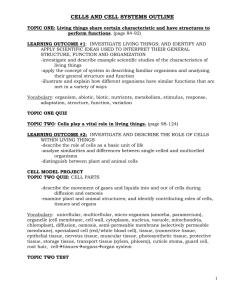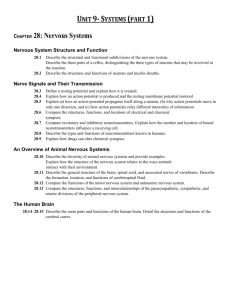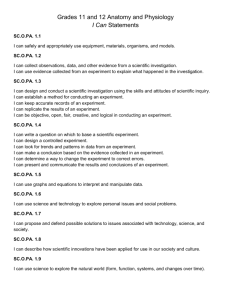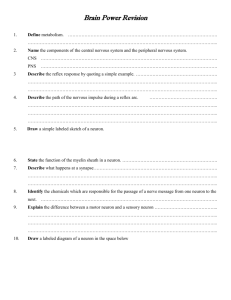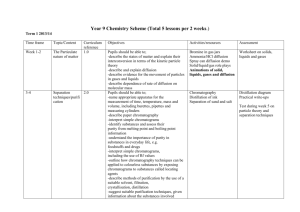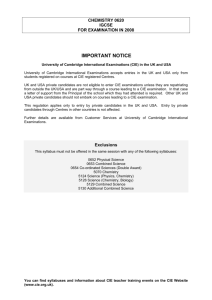2-SBI4U Homeostasis Unit in Review
advertisement
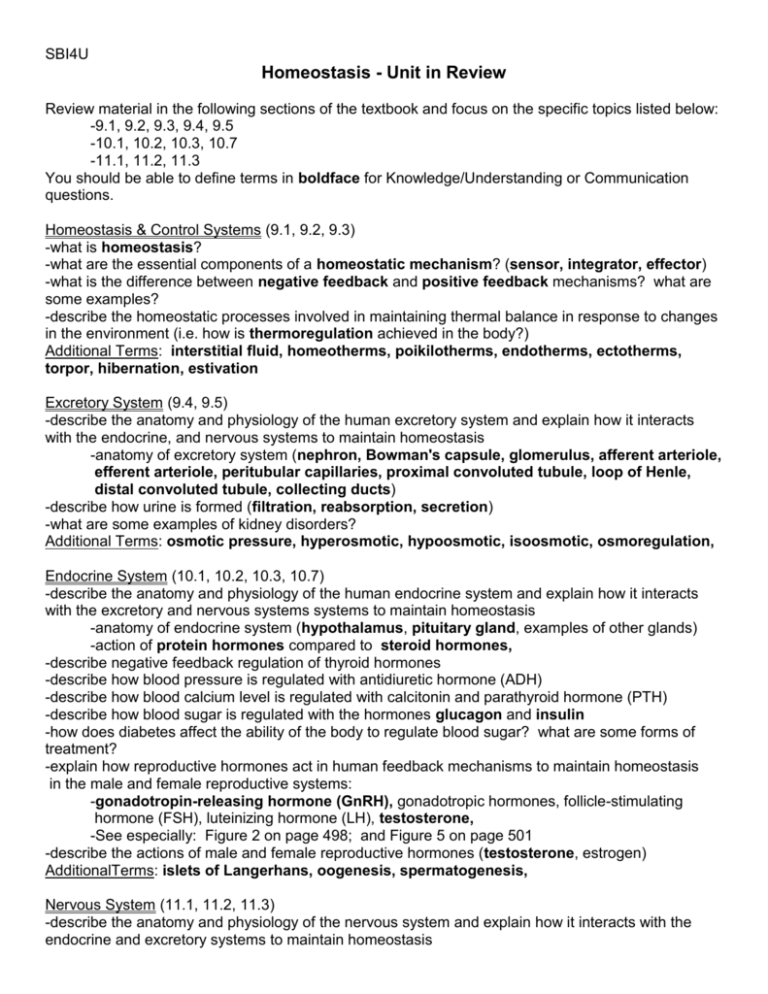
SBI4U Homeostasis - Unit in Review Review material in the following sections of the textbook and focus on the specific topics listed below: -9.1, 9.2, 9.3, 9.4, 9.5 -10.1, 10.2, 10.3, 10.7 -11.1, 11.2, 11.3 You should be able to define terms in boldface for Knowledge/Understanding or Communication questions. Homeostasis & Control Systems (9.1, 9.2, 9.3) -what is homeostasis? -what are the essential components of a homeostatic mechanism? (sensor, integrator, effector) -what is the difference between negative feedback and positive feedback mechanisms? what are some examples? -describe the homeostatic processes involved in maintaining thermal balance in response to changes in the environment (i.e. how is thermoregulation achieved in the body?) Additional Terms: interstitial fluid, homeotherms, poikilotherms, endotherms, ectotherms, torpor, hibernation, estivation Excretory System (9.4, 9.5) -describe the anatomy and physiology of the human excretory system and explain how it interacts with the endocrine, and nervous systems to maintain homeostasis -anatomy of excretory system (nephron, Bowman's capsule, glomerulus, afferent arteriole, efferent arteriole, peritubular capillaries, proximal convoluted tubule, loop of Henle, distal convoluted tubule, collecting ducts) -describe how urine is formed (filtration, reabsorption, secretion) -what are some examples of kidney disorders? Additional Terms: osmotic pressure, hyperosmotic, hypoosmotic, isoosmotic, osmoregulation, Endocrine System (10.1, 10.2, 10.3, 10.7) -describe the anatomy and physiology of the human endocrine system and explain how it interacts with the excretory and nervous systems systems to maintain homeostasis -anatomy of endocrine system (hypothalamus, pituitary gland, examples of other glands) -action of protein hormones compared to steroid hormones, -describe negative feedback regulation of thyroid hormones -describe how blood pressure is regulated with antidiuretic hormone (ADH) -describe how blood calcium level is regulated with calcitonin and parathyroid hormone (PTH) -describe how blood sugar is regulated with the hormones glucagon and insulin -how does diabetes affect the ability of the body to regulate blood sugar? what are some forms of treatment? -explain how reproductive hormones act in human feedback mechanisms to maintain homeostasis in the male and female reproductive systems: -gonadotropin-releasing hormone (GnRH), gonadotropic hormones, follicle-stimulating hormone (FSH), luteinizing hormone (LH), testosterone, -See especially: Figure 2 on page 498; and Figure 5 on page 501 -describe the actions of male and female reproductive hormones (testosterone, estrogen) AdditionalTerms: islets of Langerhans, oogenesis, spermatogenesis, Nervous System (11.1, 11.2, 11.3) -describe the anatomy and physiology of the nervous system and explain how it interacts with the endocrine and excretory systems to maintain homeostasis -anatomy of nervous system (neuron, dendrites, axons, glial cells, myelin sheaths, nodes of Ranvier, central nervous system (CNS), peripheral nervous system (PNS), afferent system, efferent system, somatic system, autonomic system, sympathetic division, parasympathetic division) -components of a neural circuit such as a reflex arc (receptor, afferent neuron, interneuron, efferent neuron, effector) -conduction of electrical signals by neurons (resting potential, action potential, threshold potential, refractory period) -transmission of nervous signals at the synapse (synapses, neurotransmitters, acetylcholine, cholinesterase) -describe how the sympathetic nervous system and the parasympathetic nervous system interact to maintain homeostasis Additional Terms: central nervous system (CNS), peripheral nervous system (PNS), neurons, sensory neurons, motor neurons Thinking & Investigation Topics: Application Topics: predicting movement of substances across selectively permeable membranes based on osmotic pressure determining what substances have been filtered, secreted, reabsorbed by looking at composition of blood, glomerular filtrate, and urine analyzing the results of urinalysis (see #58 on page 463) analyzing data on blood sugar level (see MiniInvestigation on page 486 & #54 on page 511) analyzing data on hormone levels and thickness of endometrial lining (see Figures 2 & 3 on page 505) interpreting changes in membrane potential during an action potential (see Figure 4 on page 524) kidney disease (kidney stones) & treatment (http://en.wikipedia.org/wiki/Neuron) cause of goiters effects of overproduction & underproduction of PTH types of diabetes mellitus, symptoms & treatment hormone levels during pregnancy hormone replacement therapy in menopausal women (http://biogeonerd.blogspot.ca/2012/02/action -potentials-what-make-your-brain.html)


